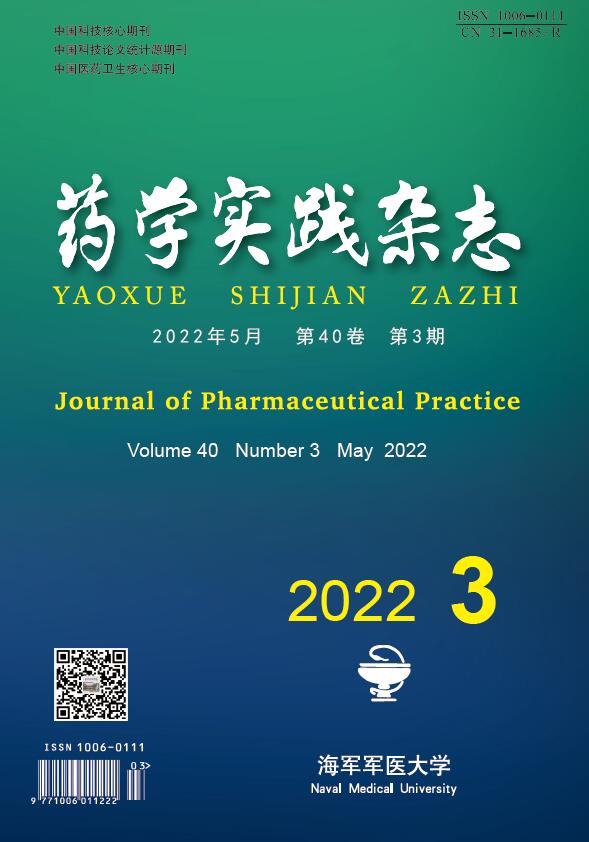-
肝脏是人体内重要的实质器官,在新陈代谢、排毒和天然免疫中发挥关键作用[1-2]。酒精、药物、病毒等是肝损伤的暴露因素,在这些损伤因素的作用下,肝细胞易发生坏死进而导致肝损伤。肝损伤过程中会引发炎症,持续的肝脏炎症将导致肝纤维化,肝纤维化的持续发展将转变为肝硬化,甚至发展为肝癌。信号转导和转录激活因子3(signal transduction and transcriptional activator 3,STAT3)是体内重要的转录因子,在细胞生长、增殖和分化等生物过程中发挥关键作用。研究发现,STAT3的激活与肝损伤、炎症、肝再生、肝纤维化甚至肝癌密切相关。本文综述了STAT3在不同肝病中的研究进展,并讨论了STAT3抑制剂在治疗肝病中的潜在应用前景。
-
肝脏由实质细胞和非实质细胞组成。实质细胞即肝实质细胞,又称肝细胞;非实质细胞包括枯否细胞(Kupffer cell,KC)、肝星状细胞(hepatic stellate cell,HSC)、肝窦内皮细胞(hepatic sinusoidal endothelial cell,HSEC)和其他免疫细胞(B细胞、T细胞、自然杀伤细胞、树突状细胞)等。
-
肝细胞的增殖和生长主要受STAT3调控,白细胞介素-6(IL-6)及其家族成员(包括白血病抑制因子、睫状神经营养因子、抑癌蛋白M、心肌营养素1和IL-11、IL-22等细胞因子均可激活STAT3[3]。STAT3被激活时其705位酪氨酸残基(Tyr-705)发生磷酸化,磷酸化的STAT3形成二聚体,并易位到细胞核中激活多种靶基因的转录,促进肝细胞存活和肝脏再生[4]。此外,肝细胞生长因子(HGF)和表皮生长因子(EGF)也可少量激活肝细胞中的STAT3信号[5-6]。
-
KC是肝常驻巨噬细胞,占肝脏中单核巨噬细胞的80%至90%。KC不仅是促炎细胞因子IL-6的主要来源,也是抗炎细胞因子IL-10的主要来源,而且KC还可以响应IL-6和IL-10的刺激 [7-8]。IL-6和IL-10能够激活巨噬细胞内STAT3,发挥截然相反的功能。IL-10激活细胞内STAT3可抑制脂多糖(LPS)诱导的炎症应答,而IL-6激活STAT3则促进巨噬细胞炎症应答。因此,KC广泛参与肝脏炎症反应,在不同病理条件下发挥不同作用[9-10]。
HSC位于窦周隙内(内皮细胞和肝细胞之间的小区域),储存并供应身体所需75%的维生素A[11]。在肝纤维化病理过程中,STAT3在肝星状细胞的增殖和激活中起关键作用[12]。IL-6可激活HSC中的STAT3,促进其存活和增殖,当HSC激活后,会产生大量胶原,促进肝纤维化形成[13]。
HSEC位于肝窦腔与肝细胞之间,它能够维持肝星状细胞的静息状态,从而抑制肝内血管收缩和肝纤维化的发展[14]。通过内皮间质转化(EndMT),HSEC能够转化为活化的肌成纤维细胞并促进肝纤维化发生,而抑制STAT3能够减轻肝窦内皮细胞中的EndMT,并改善胆管结扎(BDL)诱导的小鼠肝纤维化,表明HSEC内STAT3信号在肝纤维化中同样发挥重要作用[15]。
-
大量研究表明,在许多啮齿类动物模型中,IL-6、IL-6家族细胞因子以及IL-22对肝损伤均具有保护作用。IL-22肝脏过表达转基因小鼠可完全抵御T细胞免疫性肝炎对肝细胞的损伤。破坏IL-6/gp130、OSM、IL-22基因或肝细胞内STAT3,能够增加绝大多数动物模型肝损伤的易感性[3]。这些研究表明STAT3在肝细胞损伤保护方面具有积极作用。与肝细胞保护作用相比,STAT3在肝脏炎症中发挥着更为复杂的作用。在肝脏损伤模型中,与野生型(WT)小鼠相比,肝细胞特异性STAT3敲除的小鼠可减轻由四氯化碳、酒精诱导的肝脏炎症,促进伴刀豆蛋白(ConA)诱导的免疫性肝炎和LPS引起的肝炎。这些研究表明,肝细胞内STAT3根据不同模型可表现出抗炎和促炎的不同作用,其中STAT3激活引起的促炎作用可能是由急性期蛋白和趋化因子所介导[16-17],抗炎作用可能是通过防止肝细胞损伤而减少肝坏死引起的炎症或抑制γ干扰素(IFN-γ)活化的STAT1,进而抑制肝内促炎信号。
除此之外,多种肝损伤模型的研究表明,髓系细胞(包括KC和巨噬细胞)内STAT3在肝损伤模型中表现为抗炎作用[18-20]。但是,髓系细胞STAT3在肝细胞损伤中的作用却并不明确,如髓系细胞中STAT3的特异性缺失,能够增强小鼠对ConA诱导的T细胞免疫性肝炎和酒精诱导的肝损伤的敏感性,却减轻CCl4引起的肝细胞损伤。在髓系细胞中,STAT3的激活不仅能够抑制促炎细胞因子,如肿瘤坏死因子-α(TNF-α)和IFN-γ的表达,而且还会抑制肝保护因子,如IL-6、IL-22的产生 [21]。因此,STAT3对肝细胞损伤的影响主要由肝脏损伤期间产生的促炎因子和肝保护因子之间的平衡所决定。
-
肝脏在组织损伤后具有很强的肝再生能力。肝脏再生由多种细胞因子、生长因子、激素及其下游信号通路调节[22-23]。研究认为,IL-6及其下游信号分子STAT3在促进肝再生过程中发挥关键作用;而抗炎细胞因子IL-10亦能够激活免疫细胞中的STAT3,在抑制炎症反应的同时抑制肝脏再生[15-16,24-25]。
肝切除术(PHx)是一种广泛用于研究肝脏再生的模型。在PHx后,肝细胞会快速增殖从而恢复肝脏的质量和功能。免疫细胞通过与肝细胞的直接相互作用或通过释放炎性细胞因子间接控制肝脏再生[26]。PHx后,肝脏中LPS水平升高,LPS刺激KC产生炎症细胞因子,如TNF-α和IL-6等,激活STAT3,随后肝脏开始再生[27-28]。据文献报道,Ⅰ型TNF受体(TNFR-1)缺失的小鼠会导致PHx后死亡率增加,并伴有肝细胞增殖减少[29]。同样在IL-6缺失的小鼠模型中,PHx后无STAT3激活,小鼠死亡率增加,肝细胞DNA合成减少,AP-1、Myc和cyclin D表达被抑制,在给予单次剂量的IL-6治疗后,恢复了STAT3结合及肝细胞的增殖,有效阻止了肝损伤[30]。在PHx后,IL-22也能发挥促进肝再生的作用,IL-22能够刺激肝细胞STAT3激活,增加多种促有丝分裂蛋白的表达,如细胞周期蛋白D1(Cyclin D1)[31]。以上研究表明,在PHx或组织损伤后,肝细胞STAT3的激活会促进肝细胞增殖。与肝细胞中激活STAT3和促进肝再生的细胞因子相比,免疫细胞中的抗炎因子IL-10也可激活STAT3,但负调节肝再生。在PHx后,IL-10在肝脏中的表达下调,随着STAT3的激活,IL-10的破坏会增加肝脏炎症和肝再生反应[28]。
其他细胞,如髓系细胞STAT3激活可通过抑制炎症反应来抑制肝再生。相比之下,其他免疫细胞和肝窦内皮细胞STAT3的激活在肝再生中的作用仍然需要进一步探索。
-
肝纤维化是各种病因所致慢性肝损伤的瘢痕修复反应,其主要特征是细胞外基质的过度沉积,导致肝脏结构改变和肝功能丧失。肝星状细胞活化是肝纤维化发展中的核心事件,活化的肝星状细胞被认为是胶原纤维产生的最重要细胞[32-34]。此外,很多研究表明,成纤维细胞、骨髓内皮祖细胞和肝细胞也可以通过产生胶原促进纤维发生,而免疫细胞则可以通过细胞因子的产生调节纤维发生,如巨噬细胞释放的TGF-β通过刺激肝星状细胞活化促进纤维化,而免疫细胞1型T辅助细胞释放的IFN-γ通过诱导肝星状细胞凋亡和细胞周期阻滞抑制纤维化。
IL-6是激活肝脏中STAT3的最重要细胞因子之一,关于IL-6在各种肝纤维化动物模型中的作用仍有争议。有研究显示,与WT小鼠相比,IL-6 敲除小鼠肝损伤和纤维化更为严重,但炎症较少[35]。肝细胞特异性IL-6Ra 敲除小鼠具有更多的脂肪变性和肝损伤,而骨髓特异性IL-6Ra敲除小鼠的肝脏浸润性巨噬细胞和中性粒细胞数量较少,肝纤维化也较严重[36]。由于IL-6受体在所有类型的肝脏细胞中表达,因此,IL-6可能通过靶向不同类型的肝脏细胞来加重和改善肝纤维化。一些动物模型研究表明,肝细胞STAT3在预防肝纤维化中起保护作用,主要是因为STAT3的肝保护和增殖功能[37]。肝细胞gp130/STAT3缺失会加重肝损伤,并通过增加TNF-α表达来加重炎症反应,这种慢性肝损伤会促进肝星状细胞活化和纤维化的发生。
有关IL-6下游信号分子STAT3在肝纤维化中的作用已有很多研究报道。在CCl4诱导的肝纤维化模型中,愈肝龙可降低血清中炎症细胞因子TNF-α、IL-6的含量,抑制JAK/STAT3信号通路,同时降低了肝星状细胞活化标志物α-平滑肌激动蛋白(α-SMA)的表达[38]。 Su等[39]用STAT3的抑制剂索拉非尼和其衍生物SC-1治疗肝纤维化,索拉非尼和其衍生物SC-1能下调HSC和肝组织中的STAT3磷酸化水平,降低了α-SMA的表达。因此,通过抑制HSCs中STAT3的激活可改善肝纤维化,STAT3可能成为治疗肝纤维化中一种有前景的药物作用靶点。
-
癌细胞和肿瘤微环境中异常活化的IL-6/STAT3信号被认为是癌症发生、发展的重要因素[40-41]。肝细胞癌(HCC)是成人中最常见的原发性恶性肿瘤,也是全球癌症死亡的第四大原因,目前尚无有效治疗方法[42]。HCC由病毒性肝炎、酒精性和非酒精性肝炎引起,多年慢性肝炎会发展为肝硬化最终进展成肝细胞癌[43]。肝细胞中的多种细胞因子(如IL-6、IL-6家族细胞因子等)在体内外均可促进HCC生长。据临床研究报道,HCC患者血清IL-6浓度显著升高,男性患者IL-6水平是女性的3~5倍[44]。由二乙基亚硝胺(DEN)诱导的HCC小鼠模型中也发现了类似的性别差异,与雌性小鼠相比,雄性小鼠血清中IL-6的浓度较高[45]。除此之外,IL-22激活肝细胞中的STAT3,也能够促进HCC的发生。在HepG2细胞中,过表达IL-22会组成性地激活STAT3,上调多种抗凋亡蛋白(如Bcl-2、Bcl-xl和Mcl-1)和有丝分裂原蛋白(如c-myc、Cyclin D1、Rb2和CDK4)的表达,促进肝癌细胞增殖。
一些证据表明STAT3作为肝细胞中IL-6、IL-22的主要下游信号分子,在肝癌的发展中发挥重要作用。第一,在人肝肿瘤组织和肝癌细胞中均能够检测到组成性激活的STAT3。在体外使用STAT3的化学抑制剂或siRNA可诱导肝癌细胞凋亡和细胞周期阻滞,在体内能抑制肝癌细胞的生长,减少肝癌细胞迁移或侵袭[46-47]。第二,p-STAT3表达水平与HCC的组织学分级和肿瘤内微血管密度呈正相关[48]。第三,肝脏细胞因子信号传导抑制因子3(SOCS3)的缺失或甲基化沉默,会导致肝脏内STAT3活化增强,加快DEN诱导肝肿瘤的发生,SOCS3过表达则可抑制HCC细胞生长[49]。有文献报道,索拉非尼、乐伐替尼、瑞戈非尼可有效抑制STAT3信号,明显提高肝癌患者生存率,是晚期肝细胞癌的标准治疗方法[50-51]。Jung等[52]评估了STAT3小分子抑制剂(C188-9)在肝细胞癌中的预防和治疗潜力,发现C188-9可减少炎症反应,抑制肝细胞癌肿瘤生长。综上所述,STAT3的激活在肝肿瘤发生中扮演着重要角色,阻断STAT3可能是预防和治疗肝癌的有效手段。
-
STAT3广泛表达于机体不同类型的细胞和组织中,参与细胞生长、分化、凋亡等多种生理功能的调控,与炎症、纤维化、癌症等疾病的发生密切相关。STAT3的过度激活会促进多种疾病的发生,而抑制STAT3活化能够改善疾病的发病程度。目前,STAT3抑制剂已成为研究的热点,直接作用于STAT3的小分子抑制剂C188-9,能够减少TGF-β诱导的成纤维细胞和肝星状细胞活化,改善肝、肾等纤维化程度,抑制肿瘤细胞生长等;靶向STAT3的寡核苷酸类抑制剂AZD9150可用于治疗高度难治性淋巴瘤和非小细胞肺癌;间接作用于STAT3的JAK2抑制剂鲁索替尼,已被批准用于治疗骨髓纤维化和红细胞增多症;多激酶(包括STAT3)抑制剂索拉非尼,是美国 FDA 批准用于治疗不可切除的肝细胞癌和晚期肾细胞癌的抗癌药物,这些抑制剂的成功应用标志着STAT3抑制剂在临床治疗方面的广阔前景。除此之外,一些可抑制STAT3磷酸化的中药单体也越来越多的应用在不同的疾病研究中,例如黄酮类(淫羊藿)、萜类(青蒿)、醌类(丹参)、酚酸类(姜黄素)、碱类(苦参)和多糖类(南瓜)等。因此,STAT3是一个重要的药物作用靶点,通过研究STAT3在疾病中的作用,能够为STAT3抑制剂应用于疾病治疗提供理论依据。
在肝病方面,STAT3在不同病因和疾病阶段以及不同细胞中扮演的角色不同。在肝再生阶段,IL-6、IL-22激活STAT3有助于增加有丝分裂蛋白的表达,促进肝细胞增殖,使肝脏恢复正常形态;在肝脏炎症反应过程中,STAT3对肝脏损伤的影响是由促炎因子和肝保护因子之间的平衡来决定的;在肝纤维化过程中,STAT3在肝星状细胞增殖和活化中起关键作用,过表达STAT3会加重肝纤维化进程,而采用STAT3抑制剂可改善纤维化程度;癌症阶段,使用STAT3抑制剂可以诱导肝癌细胞凋亡和细胞周期阻滞,抑制体内肝癌细胞的生长,减少肝癌细胞迁移或侵袭。
因此,应用STAT3激活剂或抑制剂进行肝病治疗需要根据病因、病程等进行综合评估,在肝病不同进程阶段所采取的治疗方案不同,对于肝脏再生可利用STAT3激动剂进行调节,对于肝癌可利用STAT3抑制剂进行干预,而对于肝损伤、炎症和肝纤维化而言,需要根据不同病因靶向肝内不同细胞进行针对性治疗。
Research progress of STAT3 on liver disease
doi: 10.12206/j.issn.1006-0111.202109072
- Received Date: 2021-09-14
- Rev Recd Date: 2022-04-14
- Available Online: 2023-11-06
- Publish Date: 2022-05-25
-
Key words:
- STAT3 /
- liver injury /
- liver fibrosis /
- hepatocellular carcinoma
Abstract: Signal transduction and transcriptional activator 3 (STAT3) is an important transcription factor that can be activated by many cytokines and growth factors. STAT3 plays a key role in cell growth, proliferation, and differentiation. It has been shown that hyperactivation of STAT3 exists in almost all animal models of liver injury and human liver diseases. Therefore, inhibition of STAT3 activation might become a promising strategy for prevention and treatment of acute liver injury and liver fibrosis. The research progress of STAT3 on liver injury, hepatitis, liver regeneration, liver fibrosis, and hepatocellular carcinoma were mainly discussed in this review.
| Citation: | LI Tingting, ZHANG Junping. Research progress of STAT3 on liver disease[J]. Journal of Pharmaceutical Practice and Service, 2022, 40(3): 208-212, 280. doi: 10.12206/j.issn.1006-0111.202109072 |







 DownLoad:
DownLoad: